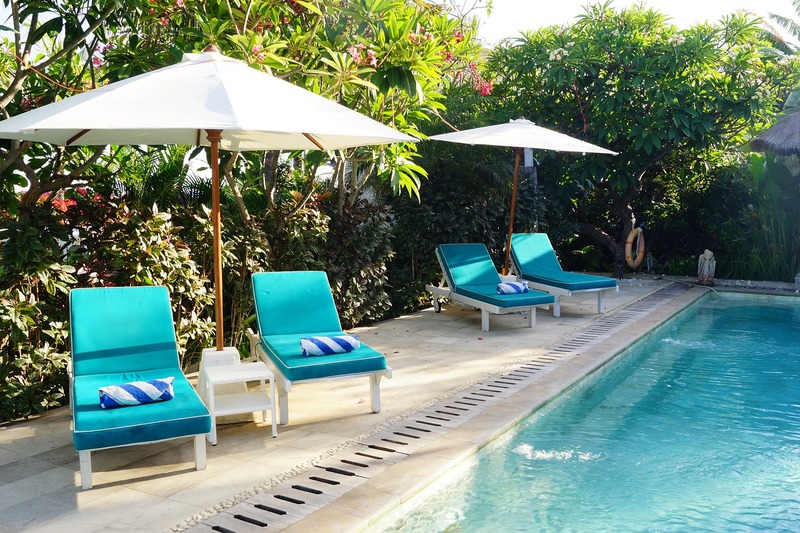
Hurricanes come and go; they are now a part of the annual seasonal changes we have come to expect. But after the hurricane, when the winds, rains, and floods have subsided, people must carry on with their lives.
If you live in a hurricane-prone area, you probably know how to protect your home, car, boat, and belongings from an incoming hurricane. But do you know how to protect your pool and screen enclosure during a storm? As it turns out, a lot of people do not know how to do this.
Below, we outline the seven steps you should take to protect your pool, pool equipment, and screen enclosure, during a hurricane. If you follow the instructions carefully, the hurricane will pass but your pool will remain just as good as it was before the storm.
Trim the branches of nearby trees and look over bushes to remove dead limbs and branches that could get airborne and become projectiles. They could easily damage your pool, pool equipment, screen enclosure, home, and nearby properties, warns Orlando Management.
1. Do not drain the pool
This is going to be the first thing your instincts tell you to do, but don’t do it. The reason you shouldn’t drain the pool is to prevent damage due to hydrostatic pressure from beneath the pool.
What does that mean? During a hurricane and the resulting flood, the ground is going to become soaked in water and the groundwater level is going to rise. If the groundwater level rises to the level of your pool, it could cause it to float or pop out of the ground, if it is empty.
2. Power down your pool equipment
All electrical equipment associated with the pool - pumps, chlorinators, heaters, lighting, etc - should be completely powered down. And the circuit-breakers that feed them turned off. This will prevent any damage that could result from electrical surges. If possible, manually disconnect power to equipment or unplug them.
3. Protect your pool equipment
After you turn off the pool equipment, you should cover any equipment that could be exposed to water. Using tarps and heavy plastic sheets, wrap the equipment securely. Apply several layers of plastic and hold them in place with duct tape and rope.
You should do this until you are sure that the wrapping is strong enough to withstand hurricane-force winds. You may also go as far as sandbagging the area around the equipment to provide a barricade against the direct force of the wind.
4. Store loose furniture and other items
Remove all unsecured items - poolside furniture & accessories or patio furniture - and stow them away. Items like umbrellas, grills, canvas awnings, or toys, can become dangerous projectiles during a storm. Remove them and store them indoors; if an object is not bolted down, it should be moved inside.
Resist the temptation to dump items in the pool, not even waterproof pool furniture (they could damage the pool's finish). The most common pool damage that occurs during storms is filter damage.
If there is a chance that the pump motor is going to be submerged during the storm, it should be disconnected and taken inside. Items that can be stored indoors do not include propane tanks. Using a chain, anchor your gas tanks to a secure object away from the home, making sure to keep them in an upright position.
5. Do not cover your pool
This sounds wrong, but it is not. The reason you may feel like covering your pool is to prevent debris from piling into it. But the cost of cleaning out a pool after a storm is far less than the cost of replacing a pool cover.
That is because during a hurricane, all kinds of flying debris - tree branches, yard debris, and an assortment of items from people's homes - can land on your pool cover and pierce it. The only time you may leave the pool covered is if you have assessed the durability of the cover versus the strength of the storm, and you think the cover can handle the onslaught.
6. Shock your pool
During a storm, all kinds of contaminants will be carried into your pool. These can range from acid rain to storm water, dirt, leaves, twigs, and bugs. Adding extra chlorine to the pool before the storm will help keep the water clean. In addition to chlorine, also add algaecide to prevent an algae bloom. Afterward, run the pump for a few hours to help circulate the chemicals.
7. Protect your screen enclosure
The best way to keep your screen enclosure from being damaged is to create a path for airflow during the storm. You can do this by removing the screen or both doors. This will prevent the screen from straining and tearing under the force of the wind. To prevent damage to the cage, pull the spline at the bottom of each panel.
Previous Article